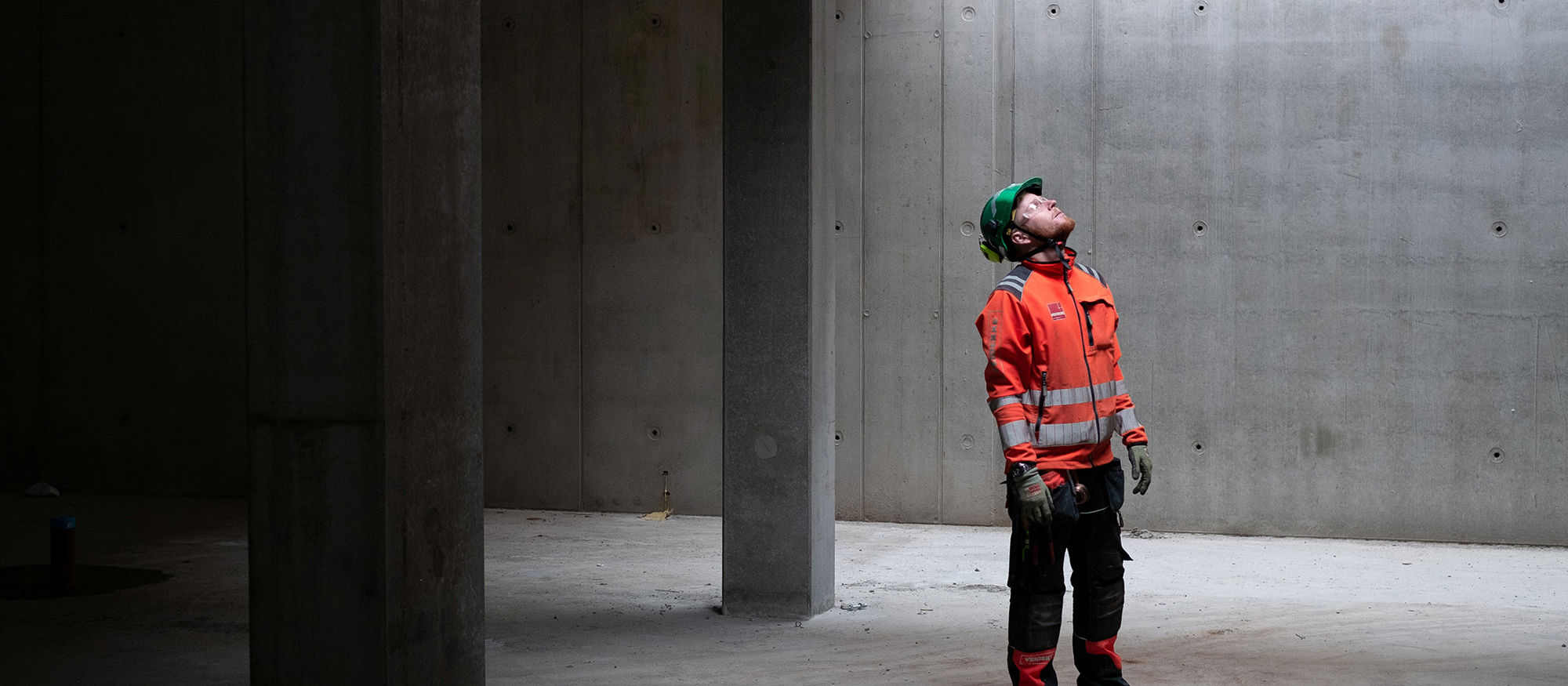Low carbon concrete
Low carbon concrete can significantly reduce greenhouse gas emissions. At Veidekke, we have delivered several projects with varying degrees from ordinary class B to low-carbon extreme (CEM III / BV).
The most common classifications are defined as:
- Low carbon B – can usually be achieved with ordinary technical composition measures
- Low carbon A – usually requires the use of special technical composition measures
- Low Carbon Plus and Low Carbon Extreme – requires the use of special binder compositions that cannot be expected to be widely available, and with several limitations in standard work.
V-teknikk
V-teknikk has several concrete technologists with broad experience and knowledge of:
- winter/summer casting
- floor casting
- use of self-compacting concrete (SCC)
- high structures
- cross laminated timber constructions
- low carbon concrete
- low-heat concrete
- curing technology
- waterproof concrete structures
- surface treatment
- aesthetic concrete
- casting of garages and basements
- slipforming
- underwater casting
- stress analysis and crack assessment
- standards and regulations
Veidekke's competence department V-teknikk, works closely with projects and tender teams to achieve cost savings and good quality. The department is working to reduce greenhouse gas emissions and ensure that new technology is used correctly in concrete work.
The concrete technology department has knowledge of relevant standards, regulations and industry publications. The department contributes to increasing the competence of skilled workers and engineers through courses and lectures internally at Veidekke.

